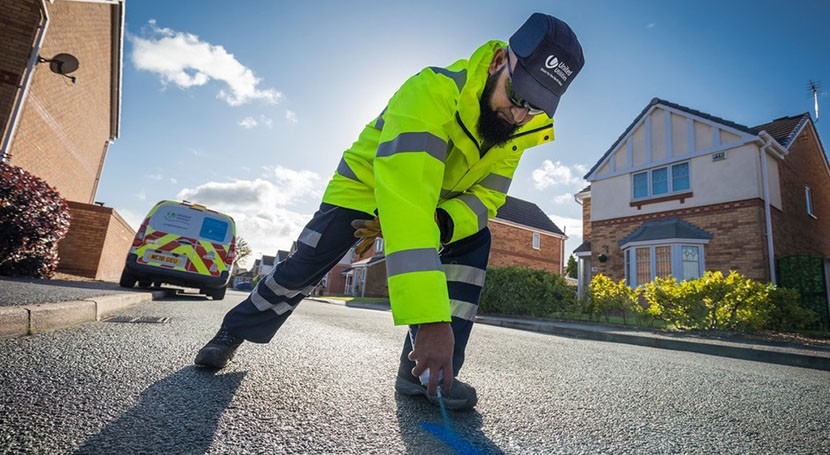Ingenious Solutions for Early Discovery of Water Leaks in Structures and Infrastructure
As the honesty of buildings and framework is critical, the obstacle of early discovery of water leaks has actually spurred ingenious solutions that guarantee to revolutionize the means we safeguard versus possible damages. From sophisticated leak discovery technologies to the release of IoT sensors for real-time tracking, the landscape of leak prevention is progressing rapidly. Device understanding algorithms use a glimpse into the future of leakage forecast, while thermal imaging presents a non-intrusive method for determining hidden leaks. Automated water circulation evaluation systems are improving how leaks are recognized and addressed, paving the means for a proactive method to water leakage discovery. Each of these remedies holds the essential to making sure the integrity and long life of our built environment, triggering a change in the direction of a more sustainable and effective future.
Advanced Leak Detection Technologies
Advanced leak detection modern technologies, equipped with cutting-edge sensors and algorithms, play a vital function in promptly recognizing and determining water leakages in various settings. These technologies employ a combination of acoustic, thermal, and electromagnetic sensing approaches to identify leakages properly. Acoustic sensors find the audio of escaping water, enabling specific localization of the leakage source. Thermal imaging spots temperature level adjustments brought on by water leakage, giving an additional efficient method for leakage identification. Electro-magnetic sensing units can identify adjustments in magnetic fields created by water, providing yet another layer of leakage detection capacity.

IoT Sensors for Real-Time Monitoring
In the realm of modern water leak discovery, the combination of IoT sensors for real-time monitoring stands for a crucial development in enhancing proactive leak detection capabilities. These sensing units supply constant surveillance of water supply, offering real-time information on water circulation prices, pressure variations, and temperature level adjustments. By leveraging IoT modern technology, these sensing units can detect even the smallest anomalies in water usage patterns, enabling early identification of potential leaks before they escalate right into significant concerns.
IoT sensing units send information to a central system, where sophisticated formulas analyze the details and create informs or notices when irregularities are discovered. This real-time tracking ability allows homeowner or facility managers to without delay resolve leakages, reducing water damage, reducing fixing expenses, and conserving water resources.
In addition, IoT sensing units can be integrated with structure monitoring systems, enabling automated responses to identified leakages, such as turning off water shutoffs or triggering pumps to mitigate the influence of leaks. Overall, the implementation of IoT sensing units for real-time tracking considerably enhances the performance and efficiency of water leakage sites detection in buildings and facilities.
Device Understanding Algorithms for Leak Forecast

One secret advantage of making use of maker knowing for leak forecast is its capability to continuously learn and enhance its precision over time. As more information is collected and fed into the algorithm, it can improve its predictions and adapt to transforming conditions, inevitably boosting the reliability of leakage detection systems.
In addition, maker learning formulas can help in recognizing subtle indications of leaks that might go undetected by standard monitoring techniques. water leak detection. By analyzing complicated information embed in real-time, these formulas can provide very early cautions and notifies, enabling prompt treatment and preventative maintenance to minimize potential water damage and associated expenses
Making Use Of Thermal Imaging for Leak Detection
Thermal imaging modern technology supplies a promising method for finding water leakages in numerous systems and frameworks. By making use of infrared radiation and temperature variances, thermal imaging video cameras can determine concealed leakages that are not quickly noticeable to the naked eye.
One of the crucial benefits of thermal imaging for leak detection is its non-intrusive nature. Unlike conventional techniques that may need getting into walls or floors to situate leaks, thermal imaging permits for non-destructive screening. This not just conserves time and lowers prices yet additionally decreases disturbance to the structure or facilities being examined. Furthermore, thermal imaging can swiftly scan big areas, providing an extensive summary of potential leak resources in a prompt way. Generally, using thermal imaging modern technology enhances the efficiency and precision of water leakage detection, making it a valuable tool for preserving the honesty of buildings and frameworks.
Automated Water Flow Evaluation Solutions
Just how can automatic water circulation anchor analysis systems change the detection and monitoring of leaks in numerous systems and infrastructures? Automated water circulation analysis systems use a proactive technique to leak detection by continually keeping an eye on water circulation rates and patterns. By developing baseline data, these straight from the source systems can promptly identify inconsistencies that may suggest a leakage, enabling punctual treatment to avoid considerable damage.
These systems use innovative algorithms to evaluate real-time information and provide immediate alerts when anomalies are identified, permitting quick activity to be taken. In addition, automated water flow evaluation systems can be incorporated with structure management systems or IoT platforms, improving total performance and enabling remote tracking abilities.
Furthermore, the data collected by these systems can be used for predictive upkeep objectives, aiding to recognize possible weak factors in the framework prior to leaks happen. In general, the implementation of automated water circulation evaluation systems can dramatically boost leakage detection and management practices, inevitably causing set you back savings, reduced water wastage, and raised sustainability in structures and facilities.

Verdict
Finally, the assimilation of advanced leak discovery innovations, IoT sensing units, equipment understanding algorithms, thermal imaging, and automated water flow evaluation systems offers innovative solutions for early detection of water leakages in structures and framework. These modern technologies make it possible for real-time surveillance, forecast of leakages, and effective discovery approaches to stop water damages and wastefulness. Applying these remedies can aid in preserving the stability and sustainability of water systems in various settings.